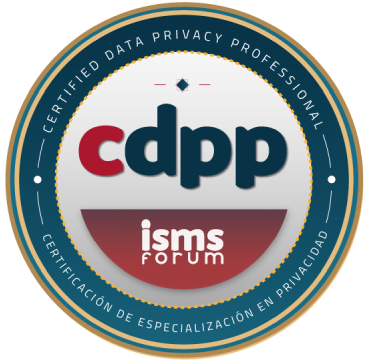Written by Fabián García Pastor and Richard Benjamins
Putting data in charge
How can leaders lead the way toward becoming a data-driven organization?
Written by Richard Benjamins and Fabián García Pastor
Few companies question the value of data and artificial intelligence (AI) for their businesses. Many proclaim their aspiration to become a "data-driven organization." However, there is often some confusion about what this concept actually means and how best to achieve it.
Data-driven organizations are fundamentally defined by two key characteristics:
- They view data as a strategic asset, not a byproduct of their operations.
- In these organizations, most relevant decisions are informed by insights generated from data using Artificial Intelligence.
Why is it important to be data-driven?
The main reason is the enormous potential that big data and AI offer for businesses. Opportunities include:
- Generate more income (do more with the same).
- Reduce costs (do the same thing with less).
- Create new business models from scratch.
Furthermore, failure to do so can mean falling behind the competition.
Beyond the business opportunities, there are also significant social benefits. For example:
- Improve monitoring and progress towards the UN Sustainable Development Goals.
- Respond to natural disasters caused by climate change.
- Alleviate forced migration.
- Combat pandemics like COVID-19 and future health threats.
These technologies are not only relevant to the private sector, but also to governments and public administrations. More and more governments are incorporating these tools into their technological, educational, economic, and sustainability programs. In this context, evidence-based decision-making is a growing expectation compared to more subjective traditional methods.
Challenges of the public sector
However, the public sector faces additional challenges:
- Overall, it lags further behind the private sector in digital transformation, a prerequisite for embarking on the journey toward becoming data-driven.
- Not all public officials embrace data as the primary source of decision-making. From a cultural perspective, this is crucial: data are the foundation of transparency, but they can also reveal truths that contradict certain political agendas.
The journey to being data-driven

From a leadership perspective, becoming a data-driven organization should be viewed as a progressive journey, not a final destination. This journey includes:
- Explore opportunities.
- Consolidate data and transform the organization.
- Make a profit.
The further an organization progresses on this journey, the more it can transform data into value in a scalable way. At the more advanced stages, it can fully leverage machine learning and other AI capabilities.
Phases of the data-driven journey
The journey begins with a phase of exploration, where the organization identifies specific problems, known as "use cases," that can benefit from data analysis and artificial intelligence. These initial cases demonstrate the potential value of data in solving problems such as reducing customer churn or increasing the effectiveness of marketing campaigns.
The next phase is that of transformation, in which the organization prepares to treat data as a strategic asset and systematically generate value. This includes dismantling data silos, establishing data acquisition strategies, and selecting use cases with significant impact.
Once the organization reaches the phase data-drivenMany important decisions are based on insights derived from data, complementing traditional intuition and experience. At this stage, organizations also explore opportunities to generate value beyond their own industry.
Finally, in the phase of artificial intelligence, the value of data is maximized through advanced techniques such as machine learning and cognitive automation. This stage requires a clear commitment to privacy, data security, and ethics.
Lessons for the responsible use of data and Artificial Intelligence
Moving forward on the journey toward becoming a data- and AI-driven organization requires making a large number of decisions. However, many of these decisions are often made implicitly or haphazardly. Leaders can accelerate this process by addressing these decisions explicitly, evaluating the various alternatives and their respective advantages and disadvantages.
The five key dimensions of decision-making

- Organization: It focuses on essential organizational aspects, such as:
- Where should the Chief Data Officer (CDO) be located in the organizational structure?
- How should data be related to the IT department?
- Should AI be integrated into the data structure or remain separate?
- How will data maturity be measured?
- What will be the strategy for external data monetization?
- Business and Finance: Includes business decisions related to data and AI, such as:
- Which big data and AI use cases will be selected?
- How will the economic impact be measured?
- How will the journey to becoming data-driven be funded?
- What will be the position towards open data and SMEs?
- Technology: Addresses crucial technological choices, such as:
- Will cloud or on-premise solutions be used? Will data storage be local or global? Will a unified data model be adopted?
- Where will the analyses be conducted: globally or locally? – Will a data collection strategy be necessary?
- People: It focuses on the development of appropriate skills and profiles, including:
- Democratizing access to and use of AI beyond the data team.
- Tools to enable non-technical employees to use AI capabilities, such as machine learning and natural language processing.
It's also critical to overcome organizational resistance to change. Traditionally, data has been managed in departmental silos, making it difficult to share data and, consequently, to share power. One strategy to overcome this barrier is to identify a "data champion" within each department and demonstrate practical results that generate internal support.
- Responsibility: It reflects the growing expectation that technology should be used ethically, avoiding unintended negative consequences. For example:
- Discrimination in facial recognition algorithms.
- Personnel selection systems that favor one gender over another. – Opaque decisions that lack adequate human oversight.
The future of work and data-driven organizations
One of the biggest fears associated with AI-driven automation is the replacement of human labor. While some studies suggest that specific tasks could be automated, others emphasize that entire jobs will rarely be automated unless all associated tasks can be performed automatically.
The impact of AI will be inevitable, but it will also bring new job opportunities and transform the nature of existing jobs. Tasks that require creativity, social interaction, and advanced skills are less susceptible to automation, highlighting the importance of empowering people to maximize their unique capabilities.
Conclusion: Towards human-AI collaboration
Leaders have a crucial role to play in guiding their organizations toward a future where AI and data empower both efficiency and human creativity. This balance between technology and human talent will allow for building more resilient, adaptable, and ethical organizations. With the right approach, the relationship between AI and the workforce will not be competitive, but collaborative.
Find out all the latest news about artificial intelligence in our Blog and train in Artificial Intelligence with our Master in Artificial Intelligence.


































